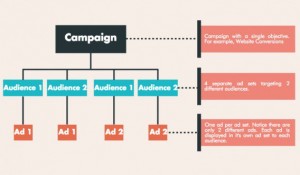
“Where do I start?” This is one of the most common questions I get from clients just dipping their toe into international. Building and launching an international communications plan is a daunting task. Whether you’re starting from scratch, or revising a prior plan that did not quite work to meet your goals, it’s best to begin by answering a few basic questions. This will help you see the current situation clearly and organize initial steps.
Internal Priorities:
What are the marketing and communication priorities outside of the US? You need to determine what will be used internally to measure success, and then be sure to address those KPIs in your communications plan. Start by identifying your target audience. If it’s end-users of a product or service, then identify which publications are most read by that audience. Remember – your message and tactics will be different if you are targeting general media or trade media.
Here are a few other points to consider:
- What is the budget per country for communications? If you have a budget for an entire region, you’ll need to set priorities to make sure you can cover the important countries with enough “oomph” to make you noticed.
- Come up with your ‘A-list’ of top priority countries first. These are usually the countries in which there is a direct sales effort, with local staff, or focused partners/distributors. In the next column, put in the language of that country. This is where most of your budget should be targeted.
- Segment the rest of the target market into ‘B’ and ‘C’ lists. These are your second and third tier countries. You’ll have a different strategy for each of these groups, and you need to allocate your budget accordingly. Be sure to add the languages appropriate for each country.
- Next, you need to identify the target audience and outlets. Are you going to focus your communications efforts solely on trade media? Solely on general business media? Or is it some combination of the two? Are there any differences in the target media between the A, B, and C lists? If there are, be sure to make notes on each list regarding the target market. Try to add percentages to each media category. This will help you focus your resources.
Finally, set up your timetable. When are you planning major news regarding products or corporate information of relevance to the particular segment lists? Are there any trade shows that are scheduled that you’ll need to include in your communications plan?
Setting Up the Approval Chain:
Once your priorities are set, setting up an approval chain that is easy to manage is the next step in your planning.
The current approval chain for domestic releases works well for international ones, but with one twist – the individuals involved must understand that the message is not for a US audience, and may need to be crafted differently from releases they’re used to seeing. If this is explained at the outset, few problems should ensue.
Have secondary approval points to use as a backup when primary approval points in your chain are traveling, on holiday, or otherwise unavailable. This will help keep you on schedule.
When dealing with multiple versions of the same release, sending them up the approval chain at the same time works well, provided you make sure the file names are unique, and you explain clearly in the accompanying email. That way, those reading and approving know exactly which release is going to which market. It’s not that difficult, and many companies do this successfully.
Most companies with local offices include one or more representative from that office in the approval chain for any release targeted for that market. This can work to your advantage. The local proofreader can assist you in tailoring your message for this specific market, and greatly increase pickup. Use this resource if you have one you can trust. However, be aware of time zones. If you are having a local office or individual approve/modify translations, this can add days to your communication timetable. Be sure to take that into account.
Once you have your priorities set and internal processes in place, you can dig into crafting your message.
(293)






